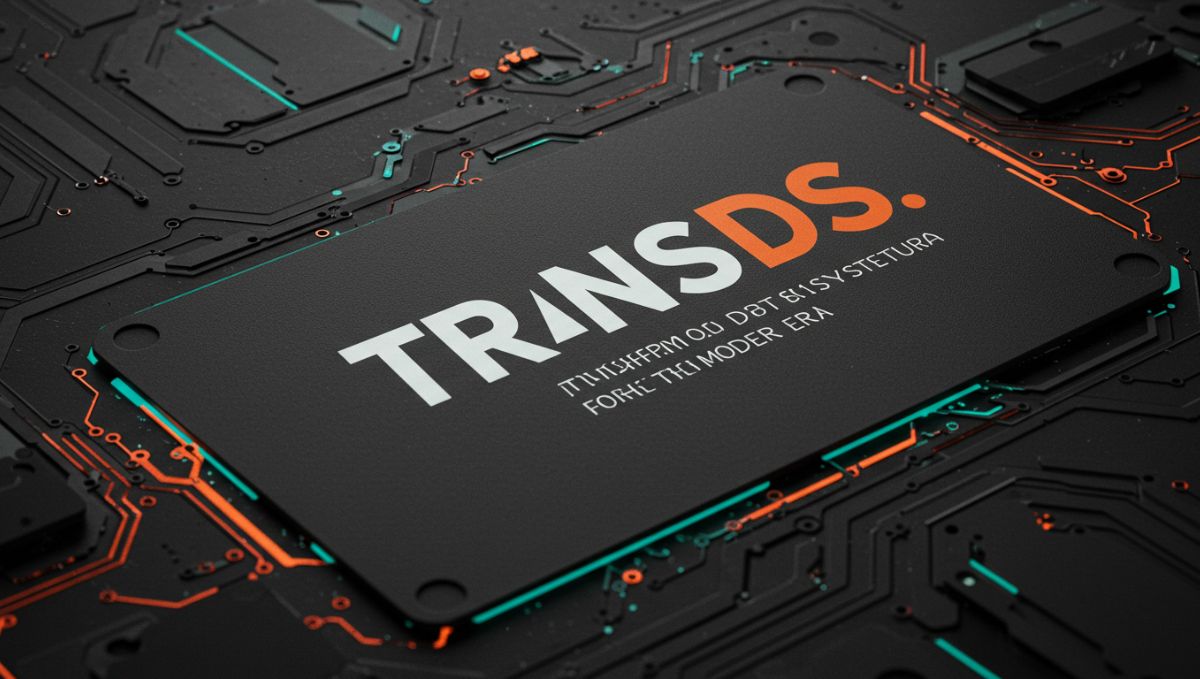Technology evolves through the birth of terms that carry not only technical value but also cultural weight. Transds is one of those keywords that sparks curiosity. For those who search for it, the intent is usually clear: they want to know what it means, how it applies to modern tech, and why it matters. Within the first glance, Transds seems abstract, but it represents an idea that bridges digital transitions, distributed systems, and scalable design in ways that shape our technological future.
To understand Transds is to explore how technology adapts to demand: moving data across boundaries, transforming structures, and distributing intelligence. This article unpacks its background, evolution, and influence across industries.
Key Aspects of Transds in Tech
| Aspect | Explanation |
| Core Meaning | Represents transition + distributed systems, emphasizing transformation and scalability. |
| Key Application | Cloud computing, AI deployment, and large-scale data processing. |
| Industry Impact | Enhances efficiency, speed, and adaptability in enterprise and consumer technologies. |
| Challenges | Complexity, resource costs, and interoperability between systems. |
| Future Potential | Central role in edge computing, AI-driven cities, and decentralized platforms. |
Introduction to Transds
At its core, Transds can be interpreted as a hybrid concept: “trans” for transition and transformation, “ds” for distributed systems. Together, they outline how technology shifts from centralized, rigid models to more dynamic, fluid frameworks that can handle today’s demands.
This matters because technology today is not just about performance; it is about resilience and scalability. Businesses, governments, and everyday users all rely on systems that must transition seamlessly while distributing workload intelligently. Transds is the shorthand for this movement, the concept behind much of modern infrastructure.
The Evolution of Transds
To grasp the significance of Transds, one must look at the timeline of computing. In earlier decades, computing was centralized: mainframes dictated processes, with clients relying entirely on a single source of power.
As the digital world expanded, distributed systems emerged, allowing multiple machines to share responsibilities. The internet made this possible, and cloud computing accelerated it. Transds, then, can be seen as the natural evolution of this journey—a framework that blends transitions (moving from old models to new) and distributed systems (ensuring everything scales efficiently).
The evolution looks something like this:
- 1960s–1980s: Centralized systems, mainframes, isolated computing.
- 1990s: Rise of client-server models.
- 2000s: Cloud computing takes hold, with large-scale distribution.
- 2010s: Big data and machine learning demand elastic scalability.
- 2020s–beyond: Transds represents the next step: distributed intelligence with seamless transitions across platforms.
Why Transds Matters in Tech Today
The keyword may seem abstract, but its importance is grounded in the challenges of modern systems:
- Scale: The amount of data generated daily is astronomical. Without distributed systems, scale collapses.
- Speed: Users expect instant results; transitions between platforms must be frictionless.
- Security: Distributed frameworks add resilience against failures, but transitions must protect data.
- Sustainability: Transds can optimize resource allocation, reducing waste in computing power.
When applied thoughtfully, Transds becomes more than jargon it becomes the backbone of digital progress.
Applications Across Industries
Cloud Computing
The cloud is built on the very principles of Transds. Workloads shift seamlessly across data centers. Distribution ensures no single point of failure.
Artificial Intelligence
AI models are trained and deployed using distributed resources. Transitioning models between edge devices and centralized servers mirrors the Transds logic.
Healthcare
Medical records need to transition securely between systems while being distributed across hospitals and research centers. Transds concepts apply directly here.
Finance
Global transactions must be fast, distributed, and safe. Transds ensures that transitions across borders and platforms remain efficient.
Urban Development
Smart cities run on distributed sensors and platforms that must transition data streams seamlessly to serve millions of residents.

The Architecture of Transds
Understanding its architecture helps ground the concept:
- Transition Layer: Responsible for moving data, applications, or workloads between systems without disruption.
- Distribution Layer: Ensures that processes are shared intelligently across networks, avoiding bottlenecks.
- Integration Layer: Bridges old and new, legacy and modern, allowing systems to interoperate.
- Optimization Layer: Focused on resource efficiency, sustainability, and speed.
This multi-layered structure explains why Transds is seen as forward-looking it is not tied to one industry, but rather adaptable to many.
Challenges Facing Transds
Like any technological evolution, Transds faces hurdles:
- Complexity: Distributed systems are hard to design and maintain.
- Interoperability: Transitioning between platforms often leads to compatibility issues.
- Cost: Scaling distributed networks is resource-intensive.
- Security Risks: Distributed nodes can become vulnerable entry points.
Yet these challenges are not insurmountable. In fact, solving them drives innovation.
Transds and the Future of AI
Artificial intelligence thrives on distribution: data is spread, models are trained across nodes, and inference is optimized at the edge. Transds ensures that AI doesn’t stall when transitioning between phases of development.
For example, imagine an autonomous vehicle system: data is gathered on the road, transitioned to central servers for analysis, and redistributed as updated models. That continuous loop is Transds in action.
Comparing Transds to Related Concepts
| Term | How It Differs from Transds |
| Cloud Computing | Focused on remote storage/computing; Transds emphasizes seamless transitions + distributed resilience. |
| Edge Computing | Brings computation closer to the user; Transds ensures smooth transitions between edge and central. |
| Blockchain | Decentralized by design; Transds is broader, including transitions across non-blockchain systems. |
| Virtualization | About simulating environments; Transds emphasizes systemic distribution + transition. |
Future Potential of Transds
The potential is vast, particularly in:
- Decentralized Platforms: Powering peer-to-peer economies.
- Smart Cities: Distributing sensor data for real-time efficiency.
- Healthcare AI: Transitioning insights instantly across borders.
- Quantum Computing: Managing transitions between quantum and classical systems.
What sets Transds apart is its adaptability. As technology evolves, it can expand into fields not yet imagined.
Conclusion
Transds is more than a technical keyword it is a lens through which we can interpret the direction of technology. By combining transitions with distributed systems, it captures the essence of modern demands: scalability, speed, and resilience.For businesses, it is a framework to rethink infrastructure. For researchers, it is a guiding principle. And for users, it is the silent force ensuring that technology simply works fast, reliable, and invisible in the background.
The concept might sound new, but its roots are already embedded in the systems we use daily. As the world becomes more interconnected, Transds will stand not as a passing buzzword but as a cornerstone of digital progress.
Frequently Asked Questions
1. What exactly does Transds mean in technology?
Transds represents the blending of “transition” and “distributed systems.” It highlights how modern technologies shift between platforms while distributing processes intelligently. In practice, it is about scalability, resilience, and seamless adaptation across systems.
2. How is Transds different from cloud computing?
Cloud computing is a service model that offers storage and computation remotely. Transds, however, is broader: it not only relies on distributed systems like the cloud but also emphasizes smooth transitions between technologies, ensuring continuity in performance.
3. Why is Transds important for artificial intelligence?
AI depends on large, distributed networks to process data and train models. Transds ensures that transitions—from training to deployment, from central servers to edge devices—are smooth, efficient, and reliable, avoiding costly delays or failures.
4. What are the biggest challenges with implementing Transds?
The main hurdles include system complexity, high costs of scaling, interoperability between legacy and modern platforms, and heightened security risks across distributed nodes. These are not small obstacles, but they push industries to innovate further.
5. What role could Transds play in the future of technology?
Transds is expected to play a central role in emerging areas such as quantum computing integration, smart city infrastructure, decentralized platforms, and sustainable data management. It will likely serve as a blueprint for resilience and adaptability in tomorrow’s digital ecosystems.

